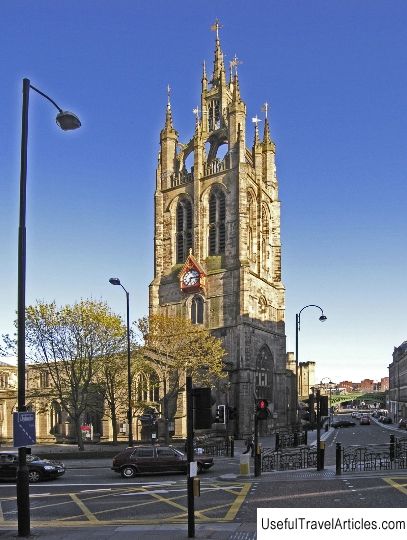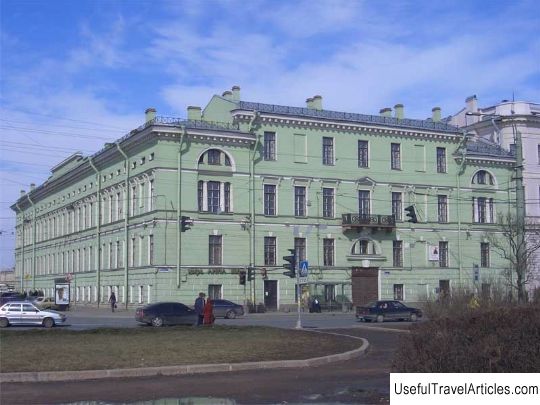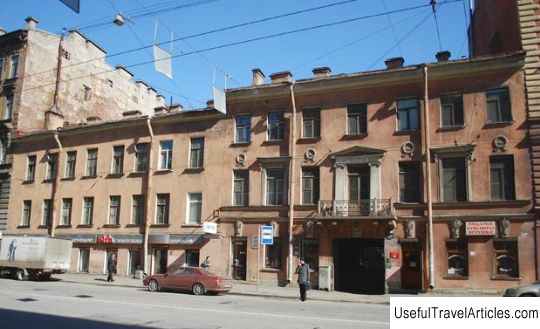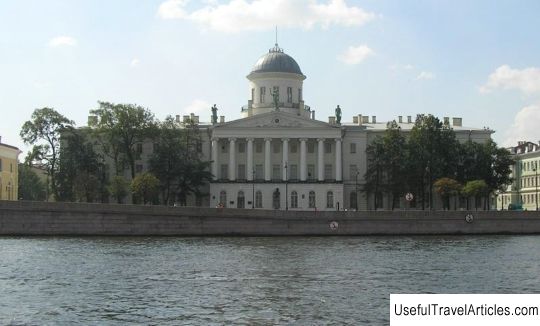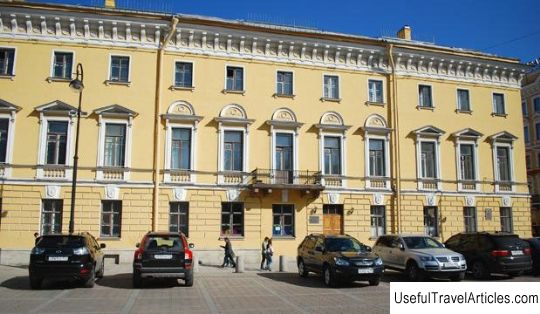House of the Myatlevs description and photo - Russia - St. Petersburg: St. Petersburg
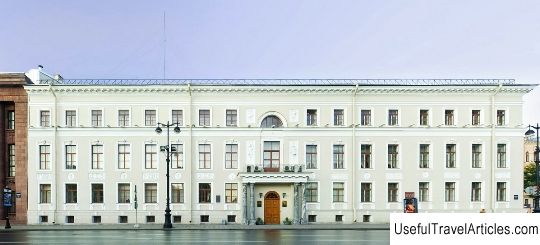
House of the Myatlevs description and photos - Russia - Saint Petersburg: Saint Petersburg. Detailed information about the attraction. Description, photos and a map showing the nearest significant objects. Photo and descriptionOne of the oldest houses, which faces the main facade of St. Isaac's Square, is the Myatlevs' house, which is an architectural monument of the classicism era. Historical personalities lived in it: Lev Alexandrovich Naryshkin; after his death, the house was owned by his son; then Ivan Petrovich Myatlov, a famous Russian poet, became its owner. This house was visited by A.S. Pushkin, M. Yu. Lermontov. The heirs of the Myatlevs rented out the house to E.V. Bogdanovich - the hero of the Crimean War. After the revolution, the house housed an art museum. Later it was transformed into an institute. The institute existed until 1927. When the war of 1941-1945 ended, the building was given to the Lenstroymaterialy institution. The Myatlevs' city estate forms an ensemble, which includes an outbuilding and the main house. The peculiarity of the angular location of the land plot on which the estate is located influenced the choice of the foundation structure. The foundation consists of two parts: one part is rubble, the second is tape. The basement part has a limestone finish, for this the so-called "Putilov slab" was used. This was the name of the slabs made from limestone quarried near the town of Putilov. The walls are made of brick and covered with plaster. There are two types of floors used in the mansion: wooden beams form flat floors, and brick beams form vaulted. The floors in the building are also of two types: there is just stone, and there is parquet. This is where the dualism in architecture ends. All windows have a standard rectangular shape. The roof is covered with iron. The building itself is very high, a rather high basement adds additional height to the three floors. The building has a rectangular shape, a projection (a ledge along the entire height of the structure, which goes beyond the facade and forms one whole with the building) in the courtyard is semicircular. Thanks to the risalit, the building has a memorable appearance and becomes on a par with the Finland Station and the St. Petersburg Mint, famous for their risalits. The wing building also forms a rectangle and has three floors. A beautiful view of the facade of the mansion opens from St. Isaac's Square. Window openings on each floor are decorated differently. The windows on the first floor are decorated with smooth platbands, and the window sills are fixed with brackets. The bas-reliefs, located above the window openings, are made in the form of sculptural compositions on the antique theme of a rectangular shape and in the form of male relief profiles of a round shape. These two types of images above the windows are arranged alternately. On the second floor, the window frames have a simple profile, they are decorated with a garland and a keystone, which has a volute-like shape. Further, above the windows of the second floor there is a frieze, above it there is a cornice. On the third floor there are square windows, framed with profiled platbands, the horizontal elements of which are unfastened, such a technique in architecture was widely used in the days of ancient Rome. In the center of the building there is an entrance made by a portico: a balcony above the entrance on the second floor , supported by two pairs of columns without flutes, the so-called Tuscan order. The balcony is delimited by a wrought iron grating. The balcony door on both sides is framed from a row of rectangular panels, the bas-reliefs on the panels are carved. Directly above the doorway there is a semicircular window, surrounded by sculptural inserts. The interiors have a perimeter layout. The front suite stretches across the entire second floor. Now it is impossible to judge how the interiors in the building were decorated during the construction period, they simply did not survive. One can only make assumptions about those individual remaining trim details that miraculously survived to our time. The front lobby is rectangular in shape, the walls of which are finished with a pair of pilasters, and at the end of the colonnades there are four semi-columns. The vault of the lobby is corbine. From the lobby there is a three-flight staircase. The staircase is semicircular in shape, it just occupies the risalit. Initially, the second floor of the building was intended for ceremonial premises, including a spacious hall with choirs, supported by columns. The hall was decorated with marble pilasters. In some rooms, the stoves, faced with tiles, survived. At the moment the building is occupied by the city prosecutor's office and the premises have been adapted for its needs: the rooms are divided into cramped offices, due to redevelopment the corridors have significantly narrowed.      We also recommend reading Regional Museum (Museo Regional de Yucatan Palacio Canton) description and photos - Mexico: Merida Topic: House of the Myatlevs description and photo - Russia - St. Petersburg: St. Petersburg. |
